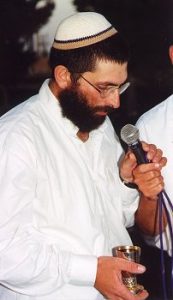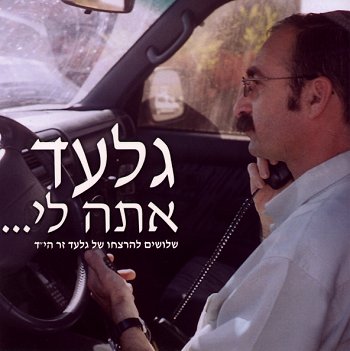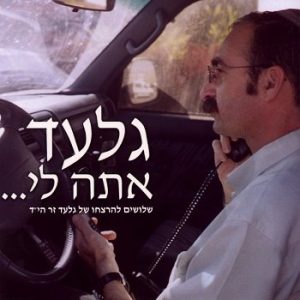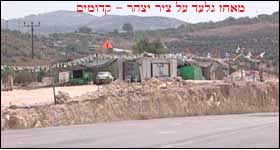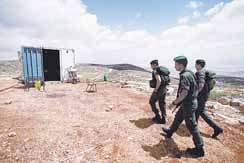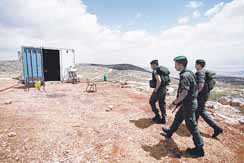Kislev 5765 Benny Katzover’s story:
Chapter 1 The return to Chevron This Shabbat we had the privilege of hosting Benny Katzover at the Itamar Yeshivat Chitzim. Benny was one of the major forces behind the return of Am Yisrael to the hills of Yehuda Shomron. He told us how, as a young student, after the Six-Day War, he joined a group of like-minded people who felt a strong connection to Chevron.
(Just two months after the war, families who owned property in the ancient city demanded that the government return it to them.) Unfortunately the government refused. Nevertheless, Elyakim Haetzni and Aaron Amir, who immediately after the Six-Day War set up an organization whose goal was to hold on to the freshly redeemed territory, began to push for a return to Chevron. Harav Levinger was asked to join forces with them and become involved in “The Movement for Eretz Yisrael Hashileyma.” (It was quite an interesting movement in that its members were from a broad range of the political spectrum.) “Eretz Yisrael Hashilayma” had everything except soldiers on the ground who could make the dream a reality. Thus, Harav Levinger turned to the religious sector of Israel for help. He invited Harav Waldmen and Harav Drukman to join him. Together they turned to families to try to convince them to join the Chevron “Garin.” Slowly but surely, they formed a nucleus that was willing to return to Chevron.
“Garin” Chevron began pressing for government permission to return to the “City of the Patriarchs” in the same way that the children of Kfar Etzion had been allowed to go home. Interestingly, not a small part of their success was due to the political rivalry between Moshe Dayan, the Minister of Defense, and Yigal Alon, the Minister of Labor. Yigal Alon had never forgiven Moshe Dayan for snatching the position of defense minister during the Six-Day War and reaping the glory of victory. Although Yigal Alon had a modest position as Minister of Labor, he was considered to be the senior party member and was Levi Eshkol’s vice Prime Minister.
Yigal Alon put together the “Alon Plan” which stressed the importance of settling the Jordan Valley, Gush- Etzion, Jerusalem, and the Aza region. On the other hand, he called for handing over the populated mountainous areas to the Arabs. Moshe Dayan had a different idea: He called for the establishment of five Jewish enclaves on the mountain ranges of Yehuda Shomron. The Labor Party was quick to adopt the Alon Plan. Thus, it was Yigal Alon that supported a return to Chevron, while Moshe Dayan opposed it.
When Harav Levinger and his friends turned to the Israeli government for permission to spend the Seder Night of Pesach 1968 in Chevron, Yigal Alon was their major supporter. Benny Katzover, who was a member of the group that moved into the Park Hotel, shared with us some of his personal experiences of that time:
The Arab owner was more than glad to rent out his hotel after having no customers for a very long time. The idea was that the group would rent the hotel for the Passover holiday and they would try to prolong their stay as long as possible. The owner, Faiz Kwasama, was more than glad to extend their visit. He even mentioned that he would be willing to let them stay as long as they wanted. The group had the foresight to ask for Kwasama’s promises in writing. Thus the dream finally became reality: ten families and several single men and women checked into the Park Hotel on the 14 of Nissan of the year 5728 / April 11th, 1968. These pioneers consisted of rabbis, yeshiva students, teachers, and craftsmen. The leader of the group was Rav Levinger. Other rabbis included Harav Drukmen, Harav Waldmen, and Harav Aviner, who at the time, was a new immigrant from France.
Benny and his friends decided that it was important to explore their rediscovered frontier. They bought a book written by Matan Vilnai’s father about Yidiat Haaretz. They wanted to know about other places in Chevron besides the Tomb of the Patriarchs. After reading about the gravesite of Yishai, Benny decided to check out the place. He followed the map and arrived at the site. Through the gate he saw an Arab hammering away at a rock. Benny waved hello as he entered the area and made his way to the gravesite. After finishing his prayer, when he was leaving, he was stopped by the Arab. The Arab told him that he was a sculptor and showed him the work he was doing. He even treated him to a cup of coffee.
After about an hour Benny finally left the site and returned to the hotel. He was so excited about his discovery that he shared the experience with his friends. He told them that they too must see it. He explained to them how to get there, and they set out on the mission. About an hour later they returned looking pretty upset. Benny asked them what had happened and they told him that an Arab threw them out. Benny couldn’t believe it. He decided to personally escort them to the site.
When they arrived, Benny walked in the very same way he had when he first came. He waved hello to the Arab sculptor and led his friends to the gravesite. When they finished, The Arab sculptor, now a great friend of Benny, greeted Benny with a hug. He invited Benny and his group to sit down to a cup of coffee. After they finally finished the meeting and walked out, they were totally blown away. They asked Benny, “How is it that this Arab treated you with so much respect? He’s the one that threw us out.” Benny asked them how they had entered the site. They said that when they arrived at the gate they were hesitant to enter. The Arab sculptor was looking at them and they asked permission to go inside. He refused, and threw them out. Benny explained that he, on the other hand, had acted as though he was boss and left his fears outside the gate. He had learned a great lesson about how to deal with his new neighbors.
Benny recalled his meeting with the mayor of Chevron, Muhammad Ali Jevri, known as the “sly fox.” Jevri was a renowned anti-Semite and was involved in the terrible massacre of the Jews in Chevron in the riots of 1929. He was also involved in the attack led by the Jordan Legion and the Arab villagers against the Jewish community in Kfar Etzion during the War of Independence. The Arab mayor, putting on a friendly disguise, greeted the group warmly. He told them how he always knew that the Jews would eventually return to the city of Chevron.
The next day there was an article in the paper which mentioned how the Israeli government was attempting to resettle the Jews in Chevron. The mayor demanded that the government evacuate the Jews from the hotel. He claimed that their stay in Chevron would lead to Arab rioting. Yigal Alon was in favor of settling the city of Haavot. He was behind the Labor government’s decision to move the group out of the hotel into the civil administration building, which was occupied by the Israeli army. Fearful of world opinion, the government was afraid to allow the formation of a settlement in Chevron. However, they agreed to the installment of a yeshiva in the civil administration building.
When the group arrived at their new home, the army was very careful to write down the names of the yeshiva students. No new additions were allowed. Nor were women allowed. In order to include the female members of the families who had been transferred from the hotel, as well as those who were not your typical lamdanim, the leaders incorporated them as yeshiva personnel. They needed a secretary, a cook, a cleaning woman, repairmen, and so on. They were soon considered the yeshiva with the largest staff! Thank G-d it worked out and their new life in the civil administration building got underway.
On Yom Haatzmaut, they decided to make a very big event and invite Am Yisrael to celebrate with them at Maarat Hamachpayla. Since they needed funding as well, they decided to sell drinks to the visitors, and they set up a stand right outside the machpeyla. The yeshiva boys took turns selling the drinks until the governor of Chevron (who was an army representative) confronted them. He was red in the face and asked them who had given them permission to set up a store in Chevron. A few hours later he issued the drink sellers an expulsion order to leave the city.
The group was beside themselves and turned to their friend Yigal Alon for help. He told them that they must help find a building that is owned by the government. Sure enough, next to the very same place that they sold the drinks was a small building with a plaque on it stating that it was a present from America to Hussein, the king of Jordan. The group had found the building they were looking for. When Israel captured Chevron This building became the property of the State of Israel. Now they had an opportunity to set up a small store. Benny recalled how his best friend, Harav Menachem Felix, was an excellent salesperson. This is the famous Gootnick building today in Chevron.
Another big problem the group faced was setting up a shul in Maarat Hamachpeyla. The government would not even allow them to bring in chairs to sit on. Every time they went to pray they had to fight with the Arabs to use their mats.
After continuing conflict over the issue of setting up a shul, Benny, Harav Levinger, and some of the other group leaders were invited to meet with Moshe Dayan, who was Prime Minister Levi Eshkol’s Minister of Security at the time. Harav Levinger instructed Benny to prepare for the meeting by learning the history of Chevron. Benny recalled how Moshe Dayan greeted them warmly as he invited them to enter his home. He even showed them his rare collection of antiquities.
After the pleasant reception, they were taken aback with Moshe Dayan’s question, “Since when is it a Jewish custom to pray in a graveyard?” Harav Levinger told Benny to answer the question. Benny, stuttering, answered that throughout history the Jews were prevented from praying at Marat Hamachpeyla only by foreign rule, although there were many rulers that actually allowed them to pray there. It’s a historical fact that as long as the Jews were able to pray at Maarat Hamachpeyla, they did so. Benny even went through a historical discourse, relating which periods the Jews were given permission to pray at the Maara and which periods they weren’t. Moshe Dayan was extremely impressed with the answer he received and told them that they had convinced him. From then on they were allowed to start fixing up the Maara and bring in furniture.
There were still many problems to be overcome. Chevron did not have permanent housing for Jews yet, and there were no jobs allowed besides learning Torah. Once in a while a few new group members were smuggled in. One day an American wearing a cowboy hat, accompanied by sheep and dogs, asked to join the group. He showed up at the Yeshiva and met Harav Levinger. Harav Levinger told him that he’s welcome to join, but he should know that there are no job opportunities available except for learning. He wasn’t your typical yeshiva student. The man said no problem, he can take care of himself.
After a week or so, Benny and his buddies took a walk with this new member, Dov Drevin. They were shocked to see that wherever they went, the Arab populace was extremely nice to Drevin, bowing down in respect. The yeshiva boys couldn’t figure out why. They claimed that it must be the big dogs that were constantly at his side. Then Drevin took them to the entrance of the kasba of Chevron and showed them his new carpentry shop, which employed both Arab and Jewish workers. When the governor found out about this shop he went ballistic. How could anyone dare set up a Jewish business in such a volatile place? When they explained that they hadn’t been given a chance to set up a business anywhere else in Chevron, the governor was willing to allow them to move the shop to the civil administration building–just to get them out of the kasba!
Benny at this point decided to give up his academic career. He realized that he had more important things to do for Am Yisrael. He was officially elected to the Chevron council. Rav Levinger asked Benny to make a list of all the supporters of Chevron including their phone numbers and addresses. After a few days Benny came up with a list of 110 supporters, and handed it over to Harav Levinger. The Rav was so pleased that he had it published in the Israeli Newspapers, claiming that 110 families want to settle in Chevron, and demanding government permission to do so. Benny told the Rav that in reality most are just donors or people who identify with the cause, but very few are actually willing to settle in Chevron. Harav Levinger told Benny not to worry about it. That very same day people called in complaining about being put on the list. Nevertheless, as a result of the announcement, more supporters began calling in, and others expressed a desire to move to Chevron. After a few weeks, the Rav requested a new list. This time Benny came up with two hundred and fifty names, which was again posted by the Rav in the papers. This time the government reacted favorably and agreed to start a building project of 250 housing units outside of Chevron. This turned out to be the beginning of Kiryat Arba, today a city of [number] Jewish residents.
Chapter 2: The Return to Shomron
Benny and his chavruta, HaRav Felix, for the longest time yearned for the return of Am Yisrael to the Shomron. How could it be that the first place Abraham Avinu saw when he came to the Land of Israel was not yet settled? Yosef, who lies in the portion of the field which his father Yaakov purchased, is awaiting the return of his brothers.
Levi Eshkol had given permission to the children of Kfar Etzion to return home. The return to Eretz Yehuda had begun. Chevron and Kiryat Arba were progressing nicely. The Gaza Strip was being settled with Nachal outposts, and the Jordan valley was filling up slowly but surely with moshavim and kibbutzim. Benyamin and the Shomron, however, remained empty of Jewish inhabitants.
Benny and HaRav Felix were in touch with the Zionist leaders of the time, but none were willing to take up the new challenge. About a year before the Yom Kippur War, the two men saw no alternative: they closed their Gemarot in Yeshivat Chevron and set to work. They began by organizing a “garin” (nucleus), which would be willing to grab a hilltop in the Shomron at the first notice.
In a few months they managed to form a garin of about fifteen families and an additional group of fifteen singles. Garin Elon Moreh (another biblical name for the city of Shechem), as they called themselves, decided to explore the frontier of the Shomron surrounding the holy city of Shechem to find a suitable location for their new yishuv. When they passed the springs of Ein Bedan (Nachal Tirtza) they fell in love with the place. Interestingly, they also checked out the possibility of settling Har Kabir, which is located not far from the center of Yishuv Elon Moreh today.
They had heard that there was a very right-wing general in charge of the central command. When they told him what they were looking for, he pulled out a plan he had drawn up which outlined a future Jewish city outside Shechem on the hills that make up Itamar today. He ended the conversation with a declaration that any move without government permission he would personally crush with his own two feet. (Gandhi was talking from past experience. In 1969 a Betar group had tried to settle on Mt. Grizim and later next to the city of today’s Ariel. Gandhi brutally threw them out of the Shomron.)
Benny and Rav Felix formed a committee to attain the proper permits from the government for a settlement. Letters were sent to government members and ministers, including Prime Minister Golda Meir. They didn’t ask for financial support. All they requested was a piece of land for a yishuv. The dream of the garin was to copy the example of Kiryat Arba by forming Kiryat Shechem. They thought this would pave the way for the future settling of all of the Shomron and Binyamin.
The government was opposed to the idea. Yigal Alon, who was a great supporter of settling Yehuda, was against the settling of the Shomron because the Arab population of the Shomron was much greater than that of Yehuda. On the Eve of the Yom Kippur war, Benny and HaRav Felix met with Arik Sharon who had just ended his career in the army. They asked him his opinion about setting up a yishuv without government approval. He answered that it was a “heavy question,” and the three decided to meet again after the Yom Kippur fast–a meeting which never took place because the war broke out and they were all called up to duty.
The Yom Kippur War, however, served as a catalyst for the establishment of Garin Elon Moreh. After the shock of the war the Israeli public was ready for a Zionist “statement.” The men behind the garin were still in the army, so the women that had to carry the flag. A letter entitled “Wives of the Recruits” was sent to Golda Meir. In it the women asked to meet with her and discuss an idea which they felt could uplift the spirit of the country. Golda Meir met with the women but was shocked to hear that they wanted to settle the land of Shechem. It was a cordial meeting but Golda Meir vetoed their idea.
On Tu Bishvat 5734 Gush Emunim was established. Its members were part of the Mafdal party and its aim was to get the Mafdal involved in other ideological areas besides education, including the establishment of settlements. According to Benny, Gush Emunim was made up of two groups. The first was Garin Elon Moreh which had nothing to do with the Yom Kippur War. The second, comprised of HaRav Levinger, Chanan Porat, HaRav Druckman, Zevulun Hammer, and Yehuda Ben Meir, formally set up Gush Emunim as a response to the war. Both groups shared the belief that the Shomron must be settled.
The movement for Eretz Yisrael Hashlaima got involved as well by striking in front of Golda Meir’s house and office. Gush Emunim, which set up vigils, joined them. Post-war negotiations about partition with Egypt and Syria, which began after Pesach of 1974, helped speed the way for Garin Elon Moreh. The nationalist groups realized that they had to create facts on the ground before it was too late. They sent letters to Yitzchak Rabin, future Prime Minister, and Simon Peres, Security Minister to be, after the fall of Golda’s government, demanding permission to establish a settlement in the Shomron. Rabin refused.
Gush Emunim heads Rav Levinger and Chanan Porat were afraid to make a move without government permission as they feared a confrontation between the settlers and the army. They turned to leaders like HaRav Goren, and Menachem Begin for support. All felt that without government permission it would be a mistake to make the move. Yet, it was decided in a group meeting with Garin Elon Moreh that a move would be made with or without government support.
As a religious garin, however, they turned first, for his blessings, to their Rabbi, HaRav Tzvi Yehuda Kook. He said he wanted to ask the advice of Menachem Begin, at that time the leader of the Liked party. Although they knew that Begin was against the idea of unauthorized settlements, they brought him to the house of Rav Tzvi Yehuda Kook. As expected, Begin told the Rav that he was against the idea because he feared a confrontation between the settlers and the army. HaRav Tzvi Yehuda said, “You hear Menachem Begin’s opinion!” — which meant that it just wasn’t the time to go through with this.
But the garin refused to give up so easily. They went back to the Rav and he told them to bring HaRav Goren for consultation. This was another blow for the garin because they knew that HaRav Goren was against the aliya. As expected, HaRav Goren, like Begin, felt that this wasn’t the time for setting up a yishuv in the Shomron.
The garin decided to approach HaRav Tzvi Yehuda Kook yet again, but this time they were going to tell him that they had decided to make the move and they wanted his blessing. When the representatives of the garin, Benny, Menachem Felix, and Yossi Arziel, got to the Rav’s house, the Rav did not let them speak. He was smiling and talking to them about this and that. The trio was elbowing one another to see who would get up the nerve to tell the Rav about their decision. Finally, Menachem Felix found the courage to tell the Rav that they had decided to make the move.
The Rav’s response was, “What do you want from me?” They answered that they wanted the Rav’s blessing. He smiled, and with a warm handshake, blessed them that G-d willing they will be successful. They went home in high spirits, unaware that this wouldn’t be last word from HaRav Zvi Yehuda.
The garin congregated in Mechola, the first Jewish settlement in the Jordan Valley, which was chosen for their set our point. Suddenly they got a message from Chanan Porat stating that HaRav Tzvi had requested that they shouldn’t make the move yet. Later it became clear what had happened. Chanan Porat had told the Rav that going ahead without government approval would lead to clashes between the IDF and the settlers. Chanan Porat demanded that the Rav get involved. Porat insisted that they must first exhaust all possible legal channels before attempting the aliya.
Rav Zvi asked Porat to arrange a meeting for him with Shimon Peres. Porat was able to convince Peres that the situation was so volatile that this meeting was crucial. Peres at the time was a supporter of the garin, unlike Yigal Alon who believed, as previously mentioned, that it was more important to settle the Jordan valley. Peres was in favor of the settling of the mountains of the Shomron as well. Benny recalls Peres saying, “Do the mountains of the Shomron fall short of the mountains of the Golan”? Peres, who was at the time Minister of Transportation promised that he would pressure Moshe Dayan who was Minister of Security. He also promised a bus line to the new Yishuv.
Peres wasn’t able to make the meeting with the Rav because on the scheduled day, June 3rd,1974, he was sworn in under the Rabin government as Minister of Security. He postponed the meeting for the following day. HaRav Tzvi requested that the garin wait the 24 hours. Despite their impatience the Garin waited the 24 hours. At the meeting, however, Peres said that he didn’t have the authority to permit the aliya without the agreement of the government. HaRav Zvi told him, “If you don’t allow it, I will join the garin myself!”
On June 5th, 1974 the members of the garin, after a roundabout trip northeast of Shechem, through Mt. Aval and the city of Shechem, arrived at Bad Shalosh, Machane Choron, a kilometer southwest of Yishuv Itamar today. This first aliya was called Chawara.
The families divided themselves into tents, and a kindergarten and school were set up. About120 people participated in the mission, which was joined by HaRav Tzvi Yehuda Kook, and Knesset members Ariel Sharon and Giula Cohen from the Likud, and Zevulun Hammer and Yehuda ben Meir from the Mafdal. The new settlement stood for two days, during which heated negotiations took place between the government and the settlers. In the end it looked as though a compromise was about to be reached. The settlers were told that they could spend the night at Machane Yosef located in the valley of Tirza between Shechem and the Jordan valley. In the end, however, the compromise failed and the army got orders to forcibly evacuate the settlers.
The painful evacuation took place at night. HaRav Tzvi and his students took hold of the fence. Chanan Porat was pulled by force from the fence. Ariel Sharon pushed the soldiers back and said, “How dare you touch someone who was injured in the Yom Kippur war?”
Rav Tzvi, who wasn’t in the best of health, stood on his feet the entire day. He was told to evacuate. Instead of doing so he yelled back, “Is this Eretz Yisrael or isn’t it? If not, bring your machine guns and shoot me!” In the end, everyone was evacuated except the Rav, who eventually left on his own.
This first attempt proved to be very useful because those who were afraid of clashes between settlers and soldiers saw that no civil war had broken out. The garin had behaved responsibly and this resulted in the recruitment of many new supporters.
Shortly after this failed attempt Benny and Menachem met with Prime Minister Rabin, who said that he was not willing to be manipulated by a small group of people. Menachem’s answer was that next time they would be coming with thousands!
After this meeting the garin went into full swing. They lobbied Knesset members, held parlor meetings, raised money and did everything in their power to promote their aliya plan. Tens of new supporters joined the garin, including Menachem Begin.
The Second Aliya: SebastiaOn the sixth of Av, the Jewish year of 5734 July 25th,1974, thirty families with their fifty children arrived at the old Turkish Railroad station at Sebastia. They weren’t alone: thousands of people, including spiritual leaders, professors, authors, knesset members and members of youth movements had joined them. For four days the masses continued to stream to the site, using four different routes which had been prepared in advance. Even on Tisha B’av people continued to come, despite the hot summer day. HaRav Dov Begun pleaded with the crowd to drink.
Rabin was quoted as saying that it was a shame it wasn’t winter so they could be washed away. Peres, on the other hand, was friendlier and wanted to bring up the garin’s request for government approval. The Ramatkal (chief of the army) Motta Gur argued with Rabin as to whose job it was to evacuate the settlers. Gur claimed that it was the job of the police. Rabin ended the argument by saying that it was the army that would do it.
Motta Gur arrived at Sebastia at the end of Tisha b’Av and met with the board of the garin. He asked them to leave the site voluntarily and promised that he would do his best to offer an alternate location. His proposal was turned down. The garin agreed on a passive resistance maneuver known as the”potato sack”.
The attempted evacuation began after Tisha B’av. It lasted for five days and resulted in the strengthening of the Gush Emunim movement. All over Israel branches were set up. Interestingly, it was the Shomron attempt, more than previous attempts like Chevron and Gush Etzion, which brought the government and the public to realize that the road to an effective struggle is through a popular, non-partisan movement. The tremendous success of the movement was seen in the formation of additional garinim..
When the decision was made for the third aliya there were an additional four garinim: Garin Shilo, Jericho, Western Shomron (which later became the settlement of Elkana) and Garin Maale Adumim. The Maale Adumim garin consisted of three groups, one from the Labor party, one from Gush Emunim, and one from the Likud. The groups consisted of both religious and non-religious members. Later Maale Adumim and Yishuv Kfar Adumim stemmed from these groups.
Third Aliya: The Hakafot MissionRabin and the Israeli government still refused to allow the settling of the Shechem region. Garin Elon Moreh and Gush Emunim, which still weren’t working together as one unit, decided that this time they would plan not only one aliya, but simultaneous ones in different parts of the Shomrom and Benjamin. Since the garinim already existed, all they had to do was to divide themselves up into different areas of settlement. Garin Elon Moreh took upon itself Neve Zalach, today known as the settlement of Neve Zuf; Garin Shilo, and Jericho were to find a place next to the biblical sites.
Expert tour guides joined the groups to help find the proper areas. After the Simchat Torah holiday on the 22nd of Tishrei 5735, October 1974, thousands of people decided to skip the second hakafot in order to hit the hills of Shomron and Benjamin. They set out for the three different sites. Jericho wasn’t chosen randomly, but because it had been the site of secret negotiations between Israel and Jordan. The Israeli government was considering an intermediate plan to forfeit a strip of land from Jericho to Ramallah.
As a result of the criticism that was leveled against Peres for failing to be more aggressive in stopping the previous settlement attempts, there were now army roadblocks on all the major access roads. In response, the original group of three divided themselves into sixteen smaller groups. The next day’s front-page headlines reported that Rabbi Yochanan Freed, then the speaker of Gush Emunim, had established sixteen settlements in the Shomron and Benjamin. Since thousands of people were scattered all over the place it was extremely difficult to remove them. The evacuations were very aggressive and this time took a full week. Gush Emunim was now definitely on the map!
The last mission was followed by a break of several months. The time was spent in organizing Gush Emunim and new garinim. The question was, “What’s







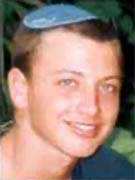
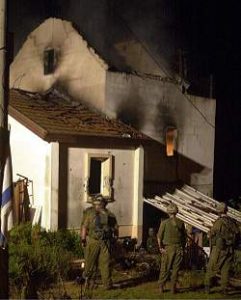
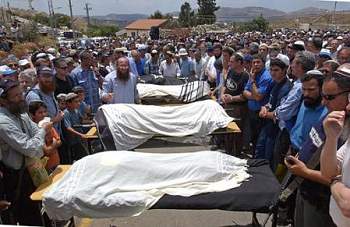
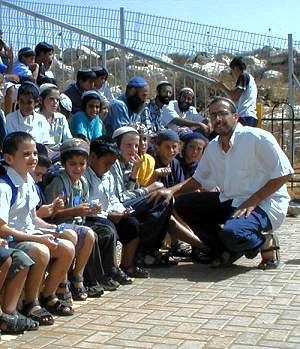
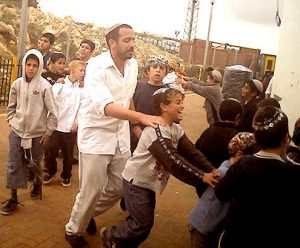

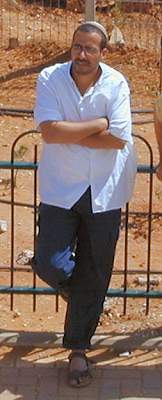
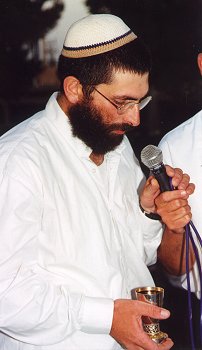
![meir2[1] width=](https://friendsofitamar.com/wp-content/uploads/2021/09/meir21.jpg)
